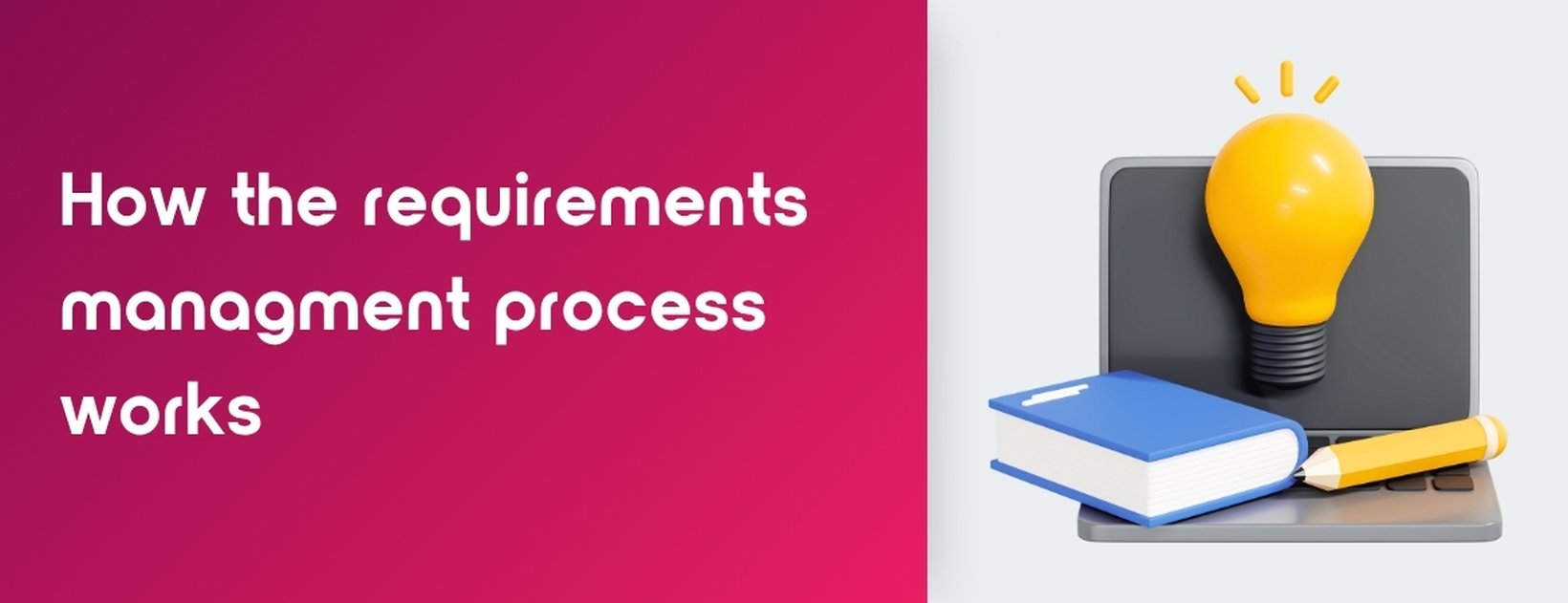Would you like to know what exactly is meant by the term “requirements management” and how you can design it to bring real added value to your project and your team? That’s exactly what we want to answer in this blog post.
What is requirements management?
Definition and objective
Requirement management is the structured process of collecting, documenting, validating, and managing requirements for a system or product. The goal is to identify the needs of all stakeholders at an early stage, implement them correctly, and document them transparently. (You can read all the facts about the basics in the Requirements Engineering basics blog).
Significance in software projects
In IT projects, requirements management is a key success factor. Unclear or incomplete requirements are among the most common reasons for delays or project failure. A well-organized process helps to avoid misunderstandings and develop high-quality software.
The phases of requirements management
1. Requirements elicitation
Information is systematically collected – for example, through interviews, workshops, or observations. The goal is to achieve a common understanding of the system requirements.
2. Documentation
All requirements are recorded consistently and comprehensibly, for example in a requirements specification or using tools such as Jira or Jama.
3. Specification and Validation
Requirements are reviewed, prioritized, and renegotiated with stakeholders as necessary. This prevents misunderstandings or misdevelopments later on.
4. Management
Structured change management ensures that changes are documented, communicated, and versioned.
Methods in requirements management
Interviews, workshops, scenarios
These classic methods help to develop requirements together with stakeholders. Workshops promote consensus, interviews provide depth.
Use cases, personas, story cards
Use cases illustrate application scenarios, personas make target groups tangible, and story cards structure requirements in an agile context.
Tools for effective requirements management
Comparison of common tools
Tools such as Jira, Jama Connect, and IBM DOORS support the collection, tracking, and documentation of requirements. They also offer interfaces to test and project management solutions.
Selection criteria
Important criteria when selecting a tool include scalability, user-friendliness, integration into existing tool chains, and functions for change management and collaboration.
IREB standard as a guide
The role of CPRE
The Certified Professional for Requirements Engineering (CPRE) certificate from IREB is an internationally recognized standard that teaches proven methods of requirements engineering. For many professionals, this certification is an important part of their professional training.
Standardized procedures
The CPRE framework brings structure and clarity to the process. It increases the quality and comparability of requirements in projects. You can read about further advantages here.
Conclusion: Manage requirements professionally
Effective requirements management is the foundation of successful IT projects. Methods such as use cases and workshops—supported by appropriate tools and standards such as IREB—ensure transparency and quality. Companies benefit from building up requirements engineering in a targeted manner and strengthening it through further training.
If you would like to participate in the training course including the certificate exam, you can find upcoming training dates on the IREB training pages.
FAQ: Frequently asked questions about requirements management
What is requirements management?
A structured process for collecting („elicitation“), documenting, and managing requirements in IT projects.
What phases does the process comprise?
Elicitation, documentation, validation/negotiation, management/maintenance
What methods are commonly used?
Interviews, workshops, use cases, personas, story cards.
Which tools are suitable?
Examples: Jira, Jama Connect, IBM DOORS.
What is the IREB standard?
An international standard with CPRE certification for professionalization in requirements engineering.
How do I implement the process in my company?
With structured methods, suitable tools, standards such as IREB, and targeted training.
